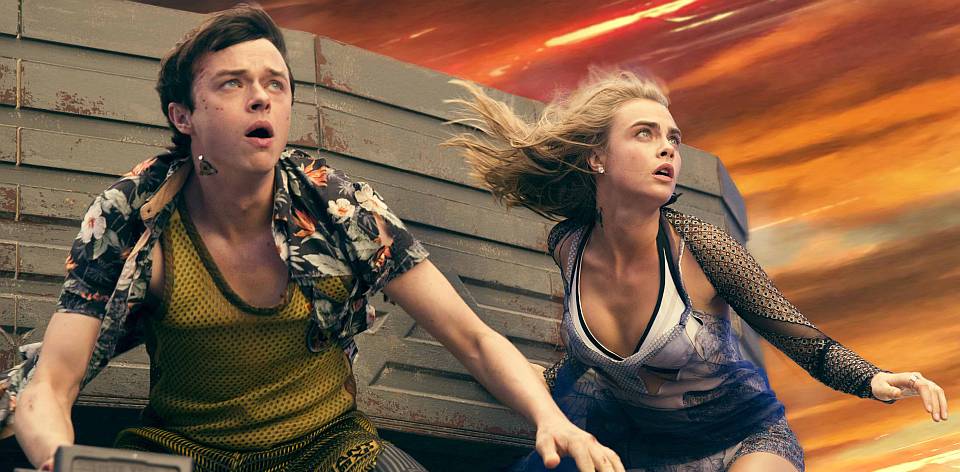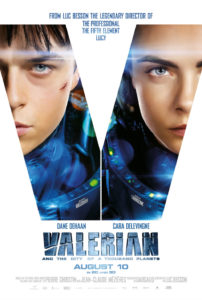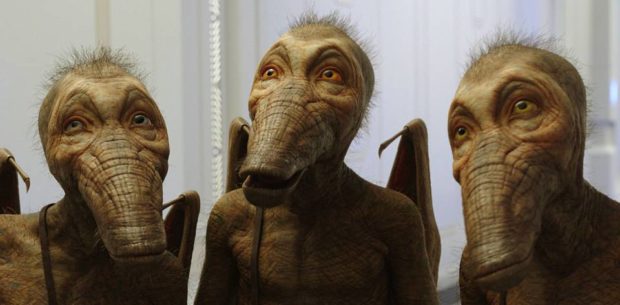Luc Besson’s career has been building towards VALERIAN AND THE CITY OF A THOUSAND PLANETS for decades. It’s not just the 7 years he spent developing the script either, but in the leapfrog advances the filmmaker has made in visually led futurescapes from Le Dernier Combat through to the beloved The Fifth Element.
Based on the long-running and highly influential French comic Valérian and Laureline, Besson’s striking opening leaves little doubt to the aesthetic influences of his film. The peaceful planet of Mül has its idyllic sci-fi environment shattered by ships careening into their world, introducing the MacGuffin of the “converter,” a small race of creatures that can replicate any material in infinite amounts.
The action picks up with space-and-time-traveling agents Valerian (Dean DeHaan) and Laureline (Cara Delevingne) tasked with retrieving the converter. Their mission sends them deep into uncharted locales, ultimately questioning everything that their military-industrial complex (led by Clive Owen as Arün Filitt) stands for.
The world of VALERIAN is a complete entity, and there really is nothing else like it on the cinematic landscape. From the Escher-esque experience of the planet Alpha to the inter-dimensional heist sequence, there is no doubting the sheer scope of the world Besson has built here. We may not see or understand all of it, but we get the feeling Besson does, and that sense of a lived-in environment translates quite readily to audience.
The flip side of this is that Besson relies on an episodic structure to navigate it all, arguably a necessity of fitting 21 volumes of the bandes dessinées into a singular entity. Besson is like a kid in a candy store, finally having all the cash he wants to buy something from every shelf but unable to restrain himself to just his favourites. The relationship between the leads, for example, remains ambiguous and underdeveloped until the very end, with character sacrificed in the pursuit of the next shiny thing.
Compounding this episodic approach is the fact that neither of the leads is particularly well cast in this enterprise. DeHaan comes across as a parody of an action hero, filtered through a voice borrowed from Keanu Reeves. Delevingne, on the other hand, just conveys wooden discomfort most of the time, and she has to carry long stretches of the film. Then again, Besson’s reputation for supporting strong female leads got thrown out as soon as he dropped “Laureline” from the title of the film.
Unsubstantiated plot threads culminate in the hi-tech equivalent of the wire dilemma trope, and a ‘love is the answer’ wrap-up that mirrors the far more emotionally satisfying The Fifth Element. In this moment it becomes patently clear that Besson has already made his white whale before, and in a much more cohesive fashion. Nevertheless, VALERIAN remains a remarkable advancement in special effects storytelling, and an indicator of the possibilities of the format.






